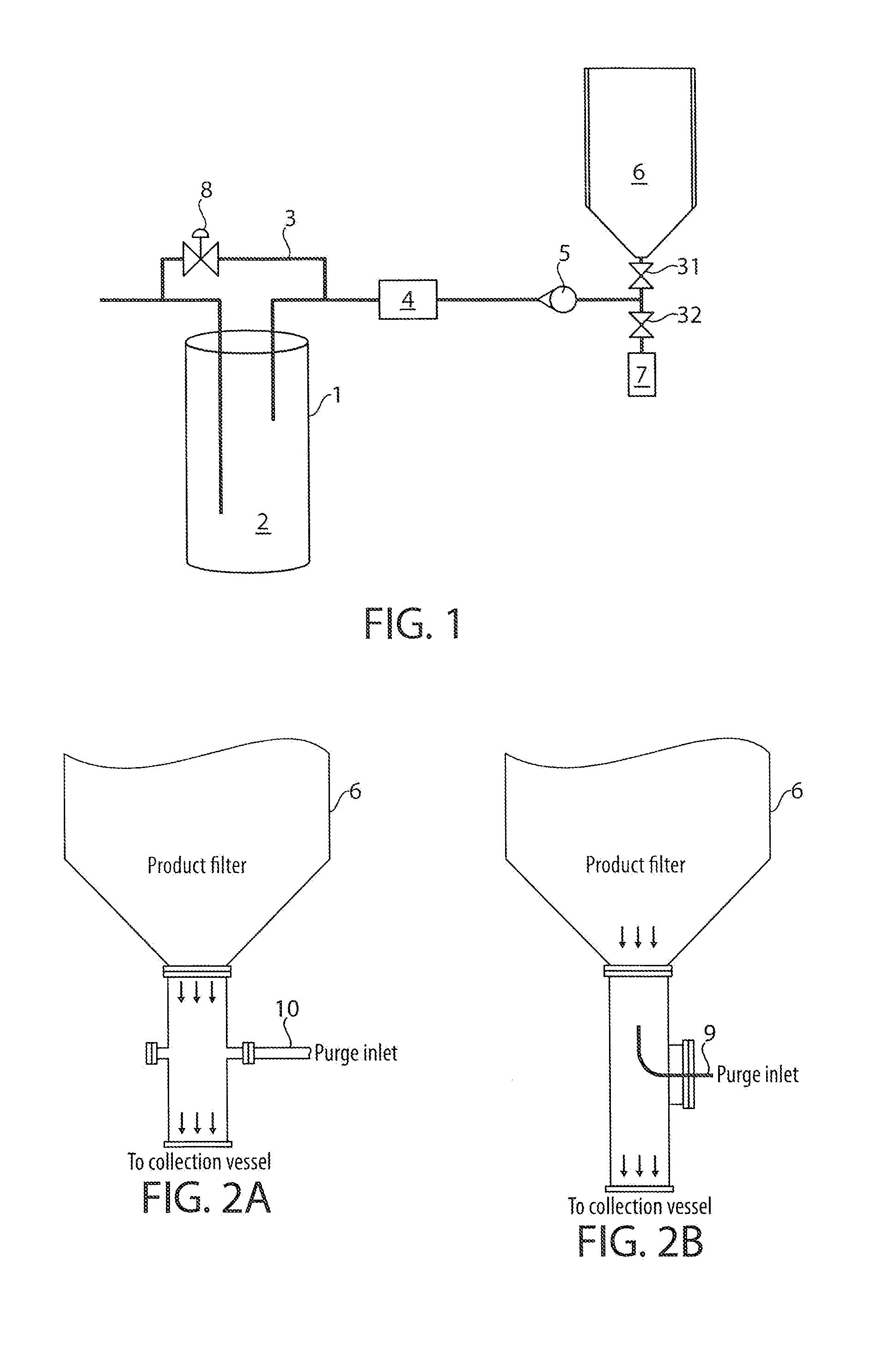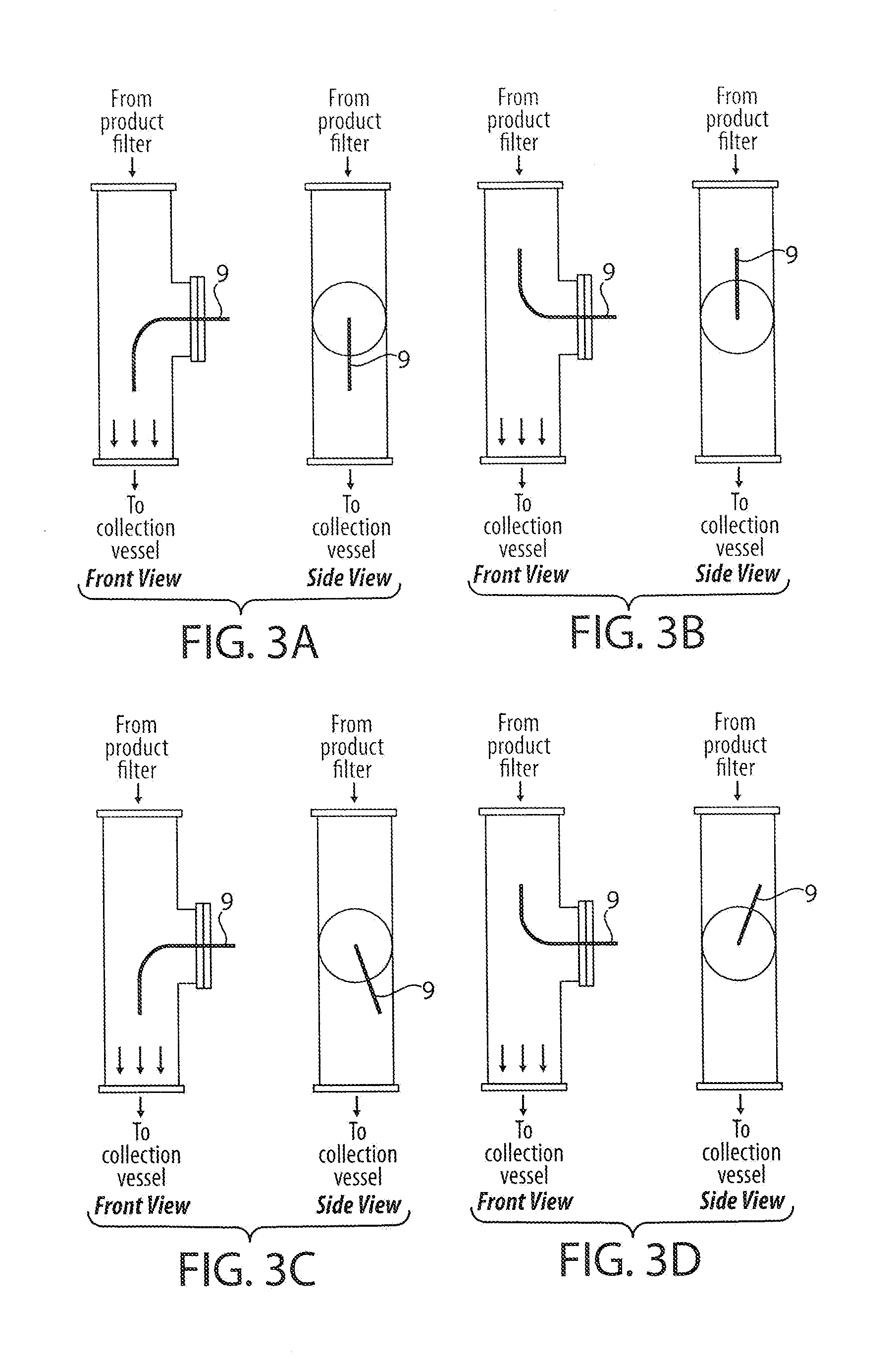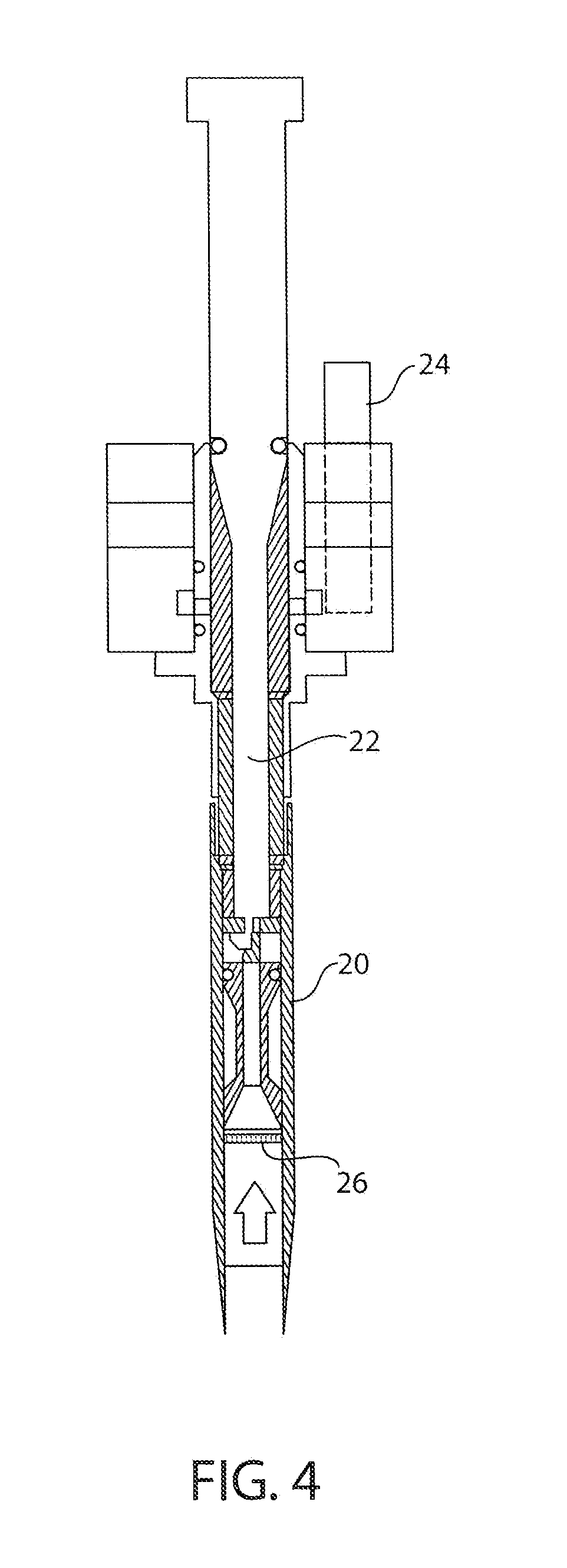Capsules containing high doses of levodopa for pulmonary use
a levodopa and high dose technology, applied in the field of capsules containing high doses of levodopa for pulmonary use, can solve the problems of slow movement, tremors, and difficulty in walking for parkinson's disease patients, and achieve the effects of reducing, reducing the effect, and reducing the
- Summary
- Abstract
- Description
- Claims
- Application Information
AI Technical Summary
Benefits of technology
Problems solved by technology
Method used
Image
Examples
example 1
[0042]This example summarizes a series of studies examining modifications performed on the spray drying operation for the production of a 90:8:2 levodopa:dipalmitoylphosphatidylcholine (DPPC):sodium chloride (NaCl) composition referred to herein as “90:8:2”. The 90:8:2 spray drying operation that was developed for the production of initial lots of powders containing levodopa involved the production of a 90:8:2 levodopa: DPPC: NaCl powder that was fully amorphous with a water content of approximately 4%, a fine particle fraction in the range of 50-60%<5.4 microns and a maximum capsule fill weight of approximately 23 mg per size 00 capsule. This combination of properties resulted in a maximum delivered dose of levodopa (fine particle mass of levodopa) of approximately 12 mg per capsule, with these powders exhibiting a high degree of electrostatic charging and low bulk (typically 0.01-0.02 g / cc) and tap density (typically 0.02-0.04 g / cc), which made it extremely difficult to fill these...
example 2
Optimization of Capsule Filling Operations
[0088]The standard 90:8:2 formulation powder is a low density powder with a high electrostatic charge. Because of the high volume which the low density 90:8:2 powders occupies, the amount of powder which can be filled into a capsule without affecting its aerodynamic performance is greatly limited. When such a low density powder has a high electrostatic charge, a high degree of variability can be seen in the fill weights of capsules due to the constant interaction of the charged powder with the walls of the capsules and the filling equipment. Capsule filling operations for such a powder, which displays a low fill weight and high weight variability at the same time, presented a set of unique challenges, all of which necessitated filling equipment modifications which helped achieve the fill weight goals without affecting the physical and chemical properties of the powder.
[0089]This example summarizes the experiments and modifications carried ou...
example 3
Analysis of Capsule Materials and Emitted Dose
[0116]It was hypothesized that certain types of capsules may be useful in increasing the emitted dose of powder. HPMC “clear” capsules and HPMC / titanium dioxide “white” capsules were chosen. Two workstations with an inhaler configured with emitted dose tubes were provided. Clear or white capsules were filled to 28 mg with inhalable levodopa powder (dry weight ratio of 90:8:2 of levodopa:DPPC: NaCl) prepared in accordance with Example 1 to a target load and placed in the inhaler. An analyst was assigned to each station and actuated the inhaler into the ED tube at 28.3 L / min for 4.2 seconds and rinsed for content. The FPF of the content was measured using standard procedures. Analysts also switched work stations and used each other's inhaler technique. The results are provided in the following Tables 13-20. Tables 13 and 14 show the comparison of white capsule sourced from Shionogi, Inc. as compared to the clear capsule (no titanium dioxid...
PUM
| Property | Measurement | Unit |
|---|---|---|
| Fraction | aaaaa | aaaaa |
| Fraction | aaaaa | aaaaa |
| Fraction | aaaaa | aaaaa |
Abstract
Description
Claims
Application Information
 Login to View More
Login to View More - R&D
- Intellectual Property
- Life Sciences
- Materials
- Tech Scout
- Unparalleled Data Quality
- Higher Quality Content
- 60% Fewer Hallucinations
Browse by: Latest US Patents, China's latest patents, Technical Efficacy Thesaurus, Application Domain, Technology Topic, Popular Technical Reports.
© 2025 PatSnap. All rights reserved.Legal|Privacy policy|Modern Slavery Act Transparency Statement|Sitemap|About US| Contact US: help@patsnap.com



